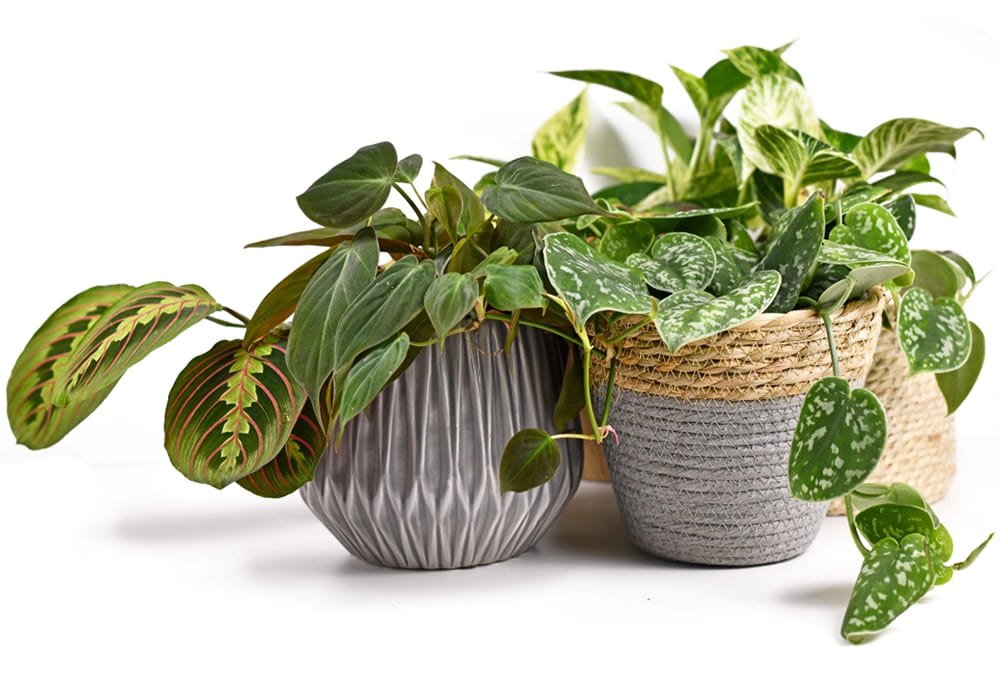
Let’s be honest: Some plant species look so similar that it’s difficult to tell them apart. When a plant has a similar color, leaf shape, and structure as another, it can get confusing. Although the difference between two plants may not matter for aesthetic reasons, it is important to be able to tell a houseplant apart from another in order to give it the proper care it needs.
A pair of plants that are commonly confused are the Philodendron and Pothos. Both plants look similar and even have similar habits, but they do have some key differences that affect the way that you care for these plants.
Today, we’ll explain the characteristics of the Philodendron plant and the Pothos plant, and we’ll highlight the main differences between the two. By the end, you’ll be able to recognize what makes these popular plants different from one another.
Table of Contents
What is a Philodendron?
The Philodendron is a genus of several different plant species with over 480 currently recognized varieties, although many of them do look like Pothos plants.
Some of the most common types of Philodendron plants include:
- Philodendron Xanadu
- Philodendron Pedatum
- Philodendron Bipinnatifidum
These plants are native to South American rainforests, so they love water and high humidity.
Philodendrons have large leaves, and all varieties produce aerial roots, allowing them to climb up against trees and other nearby objects for stability.
Philodendron plants are very popular plants and often get confused with several plants other than Pothos, including the Monstera.
What is a Pothos?
Pothos plants, commonly known as Devil’s ivy, are a species of plants found in the Epipremnum genus. These plants are also climbers with aerial roots.
This tropical plant is native to Southeast Asia but is now widely available around the world. Just like the Philodendron plant, the Pothos plant is low-maintenance and easy to take care of, making them a great indoor plant for beginners.
Now that you know more about each plant, let’s take a look at the differences between Philodendron and Pothos plants.
Philodendron vs. Pothos Plants – How to Tell the Difference
Philodendrons and pothos plants both have their similarities. In fact, they both belong to the same plant family, Araceae, and they’re both climbers. Plus, their leaves do look similar (with slight differences), and they both grow to be about the same size.
However, there are some visible differences as well as categorical differences in these plants that are important to recognize. Below are some of the most significant differences to make as we further break down Philodendron versus Pothos plants.
Difference #1: Genus
Let’s start off with the most important difference: taxonomy.
The primary difference between Philodendron houseplants and Pothos houseplants is their taxonomy, namely the genus that each one belongs to. The Pothos plant belongs to the Epipremnum genus, and while the Philodendron plant is itself a genus with over 480 different species.
This difference is a good starting point toward understanding the needs of each plant, as well as each one’s potential growing habits.
Difference #2: Leaves
It may not be noticeable at first glance, but Philodendrons and Pothos have different leaf shapes.
Most Philodendrons have heart-shaped leaves. There’s even a species of Philodendron commonly referred to as the heart-shaped Philodendron. In contrast to the Philodendron leaf, the shape of the Pothos leaf is relatively straight.
The texture of the leaf of each plant is also different, with Philodendrons having a smoother, softer texture, and Pothos typically being thick and waxy.
Difference #3: Roots
Both Philodendron and Pothos are climbers, meaning their roots grow above ground (aerial) and allow them to grow up trees or if they’ve grown as a houseplant, any object they can find. That being said, each plants’ aerial roots have distinct qualities.
Pothos’ aerial roots are thick, and there’s only one root per node. On the other hand, Philodendron aerial roots are thicker, and each node contains two or more roots.
Difference #4: How They Grow
Another key difference between these two plants is that the pothos leaf and the philodendron leaf come into the world differently. Pothos leaves extend from a current leaf, whereas Philodendron leaves extend in a thin waxy sheath called a cataphyll.
This sheath turns brown and eventually falls out on its own revealing a new leaf, similar to a butterfly in a cocoon. This process is specific to philodendron plants, making it an easy way to spot the difference between them and pothos, as well as other similar-looking plants.
Difference # 5: Lighting
This is a minor difference between philodendron plants and photos plants, but it is a difference nonetheless, and one that affects how you take care of each plant.
Both Philodendrons and Pothos prefer bright, indirect sunlight, but they generally tolerate low light. However, this is truer for Pothos than it is for Philodendron, which gets leggy more easily without proper lighting.
Pothos withstand low light very well, and its leaves usually remain unchanged. What’s more, is that it also handles droughts a lot better than Philodendron.
Summary
Philodendron and pothos plants are often confused with each other, and they admittedly look very similar, but they are in fact very different. Their differences dictate how each plant should be taken care of, giving you an idea of what to expect when it comes to their growth habits.
Each of these plants also gets confused with other varieties of plants, making it even more difficult to recognize them. However, hopefully, the key differences highlighted in this article help you to better differentiate between the many species of Philodendron plants and pothos plants.

Top 10+ Difference Between Philodendron And Pothos
Tuesday 6th of September 2022
[…] Source: 🔗 […]